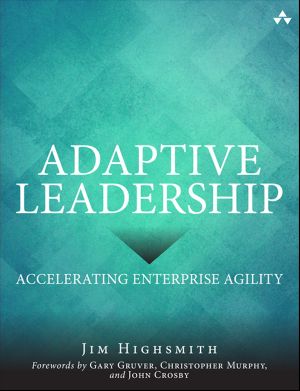Adaptive Leadership · Accelerating Enterprise Agility (Jason Arnold's Library)

- Authors
- Highsmith, James
- Publisher
- Addison-Wesley Professional
- Tags
- business
- ISBN
- 9780133598643
- Date
- 2013-11-01T00:00:00+00:00
- Size
- 2.33 MB
- Lang
- en
Lessons from Agile's First Decade...Leadership for Agile's Next Decade The agile software movement has now been around for a full decade. As coauthor of the original "Agile Manifesto," Jim Highsmith has been at its heart since the beginning. He's spent the past decade helping hundreds of organizations transition to agile/lean. When it comes to agile, he's seen it all-in a variety of industries, worldwide. Now, in " Adaptive Leadership ," he has compiled, updated, and extended his best writings about agile and lean methods for a management audience. Highsmith doesn't just reveal what's working and what isn't; he offers a powerful new vision for extending agility across the enterprise. Drawing on what's been learned in application development, this guide shows how to use adaptive leadership techniques to transform the way you deliver complete solutions, whatever form they take. You'll learn how enterprise agility can enable the ambitious organizational missions that matter most; how leaders can deliver a continuous stream of value; how to think disruptively about opportunities, and how to respond quickly by creating more adaptive, innovative organizations. Coverage includes Discovering and executing new business opportunities far more quickly Delivering complete business solutions earlier, and iterating them more often Organizing for innovation, and systematically managing opportunity flow Clarifying the degree of strategic, portfolio, and operational agility you need, and focusing on your highest-value transformations Creating cultures that actually can adapt and learn Reinvigorating the roots of agile value and values Understanding IT's changing value proposition, and retraining your people accordingly Integrating economics, products, and social responsibility Choosing metrics that guide agility, not counterproductive traditional metrics Understanding the financial implications of technical debt Optimizing business value by doing less-and guiding the process with "NOT to do" lists Speculating intelligently when you can't plan away uncertainty Customizing management to each project's needs (because not all projects should be equally agile)